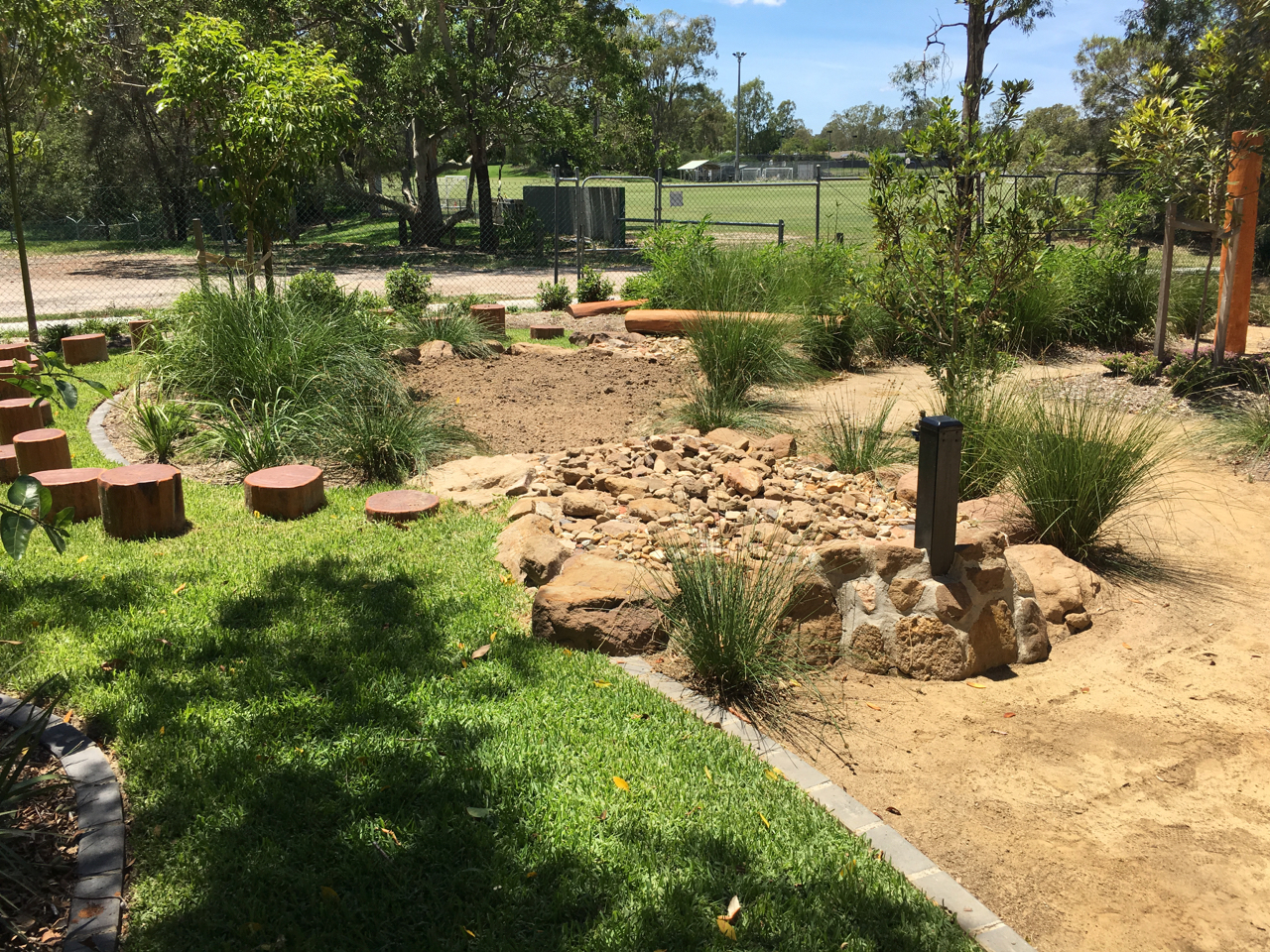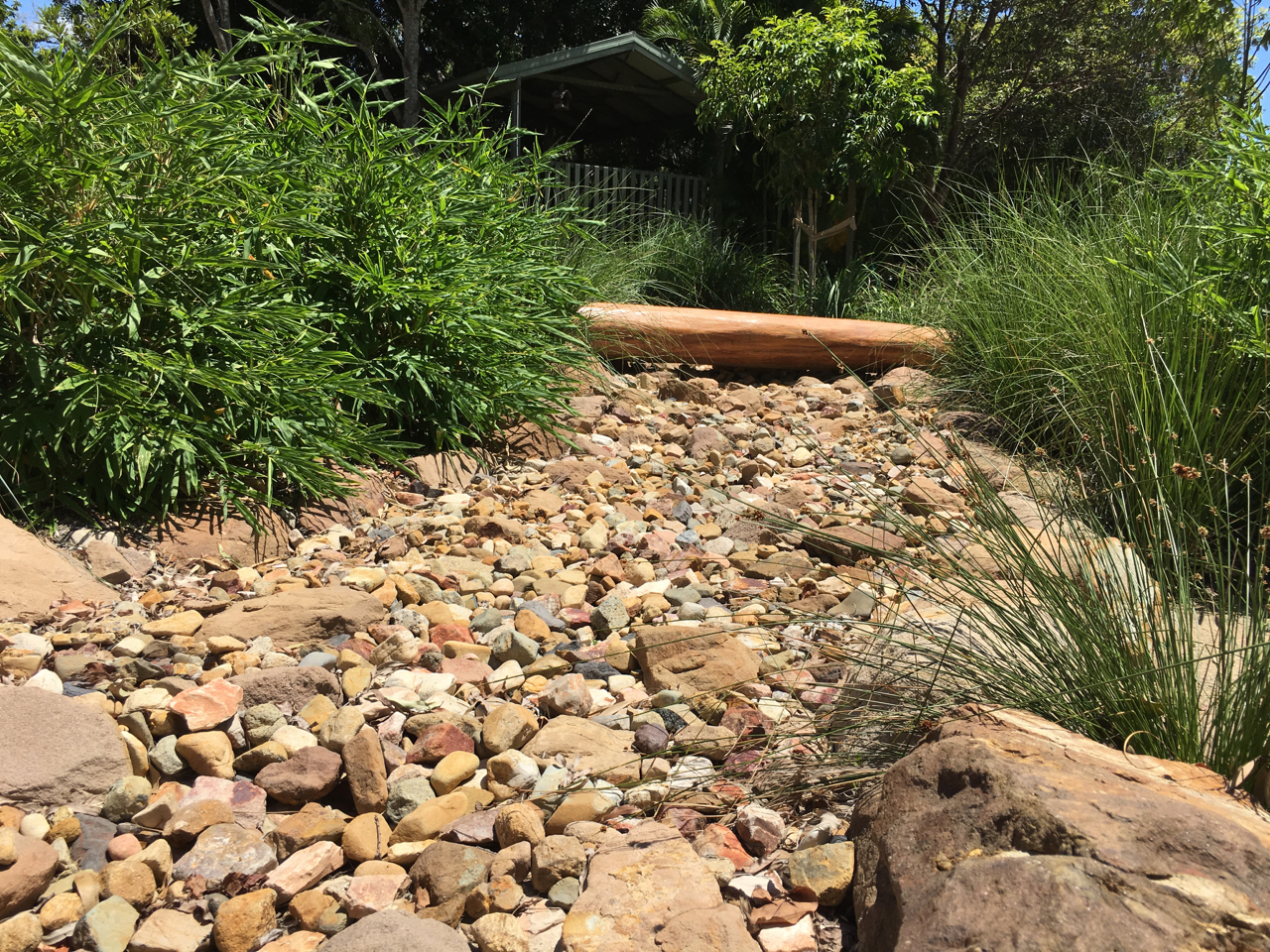By Rob Waddell
There are many health benefits connected to nature play from cognitive, social and emotional development, to the building of resilience and creativity. But nature play is still not incorporated as much as it should be in childcare playground design.
If you’re yet to incorporate nature play in your childcare centre or kindy play area, here are five reasons why you should reconsider your approach.
1. Unscripted play increases imagination
Children from a young age can experience a lot of structure to their lives, and while an element of structure and routine is needed for their happiness and wellbeing, too much structure, particularly around play, can stifle creativity.
Without being given prompts or recognisable play equipment, children are able to activate their imaginations, create stories, and be more likely to explore their environment.
At Guymer Bailey Landscape we believe in increasing the opportunities for children to enjoy more unstructured play outdoors and in nature, and were recently given the opportunity to bring this philosophy to life through the design of the new nature play space at Bellbowrie Kindy.
““In a world where children are constantly being told what to do, here was an opportunity to provide an unscripted play space that would foster imagination, creative thinking, and investigation.” ”
Our team, in partnership with kindergarten teacher and coordinator, Pam Niven, and in consultation with parents and children at the Bellbowrie Kindy, created a space that consists of a number of features to encourage hours of unscripted play. These include:
A natural watercourse fuelled by a water pump to allow kids to control the flow of water down the creek
Mudpits and digging mounds
Barefoot garden paths around a forest of natural totem poles
Log bridges, balance beams and stepping stones,
Scented and flowering native plants
Pottery garden
Yarning circle centred on a fire pit to introduce to children the indigenous concept of storytelling in an organic way
2. Getting dirty leads to happy exploration
Children need to be active and have the opportunity to run around and be happy playing outside. Worrying about stains and getting dirty only limits their play and can lead to guilt around activities that they find are fun and exciting.
Children who are given the time and opportunity to get dirty and explore, discover their world, and how things work. This exploration boosts their social, physical and creative skills, which can be well worth the extra washing.
3. Challenges teach resilience and risk management
““Children need the opportunity to develop their resilience through challenges” ”
The single-minded focus on injury prevention through risk elimination that the playground industry has had in recent decades, has been found to be detrimental to children by ignoring their need to learn how to manage risk themselves.
Changes to the Australian Standards last year reflected this shifting emphasis and recognised that the downsides of risks should be balanced against the very real benefits of incorporating meaningful graduated challenges for children to explore and test their capacities and limitations.
The Bellbowrie Kindy nature play space embraces this realisation, in the hope that even at the kindergarten age, we can set a course for stronger, better-equipped and more resilient future citizens.
4. Enlivening sensory experiences
Nature play is a great way to engage all seven senses being sight, smell, touch, hearing, taste, vestibular (sense of balance) and proprioception (sense of body awareness in space). This is incredibly important when you consider sensory play has been proven to support fine and gross motor skills, cognitive growth, problem-solving skills and language and social development.
The design of the Bellbowrie Kindy nature play space has created an environment that enhances and enlivens the children’s sensory experience and importantly, at the same time, provides inclusion and engagement for those experiencing sensory impairment or disability.
5. Creating environmental awareness
““We want to develop a love of nature that will help carry them through the rest of their lives” ”
Perhaps one of the most underrated benefits of nature play is that it can also develop an environmental awareness and appreciation, which can create a concept of stewardship later in life. A legacy worth leaving our children.
Could your kindy or childcare centre benefit from more nature play? Talk to our specialist playground designers today on 07 3870 9700 (Brisbane) or 03 8547 5000 (Melbourne).
About the Author
Rob Waddell is the Principal Landscape Architect at Guymer Bailey Architects. With extensive experience in designing landscape architecture for the community and education sectors, Rob has a proven track record of designing award-winning outdoor areas that capture the hearts and imaginations of children and enrich the experiences of the local community. With a keen interest in exploring the relationship between natural and built environments, Rob develops high-quality design outcomes that prioritise placemaking and people-centred design and work in harmony with the natural environment.






